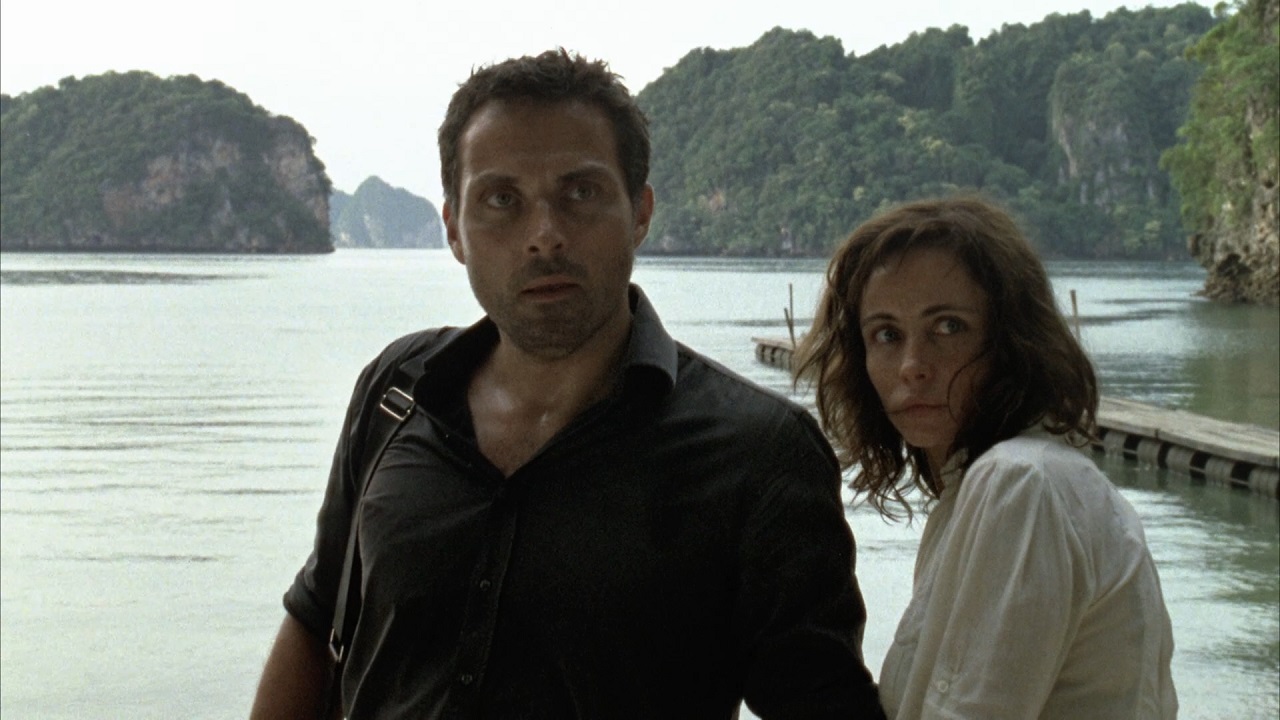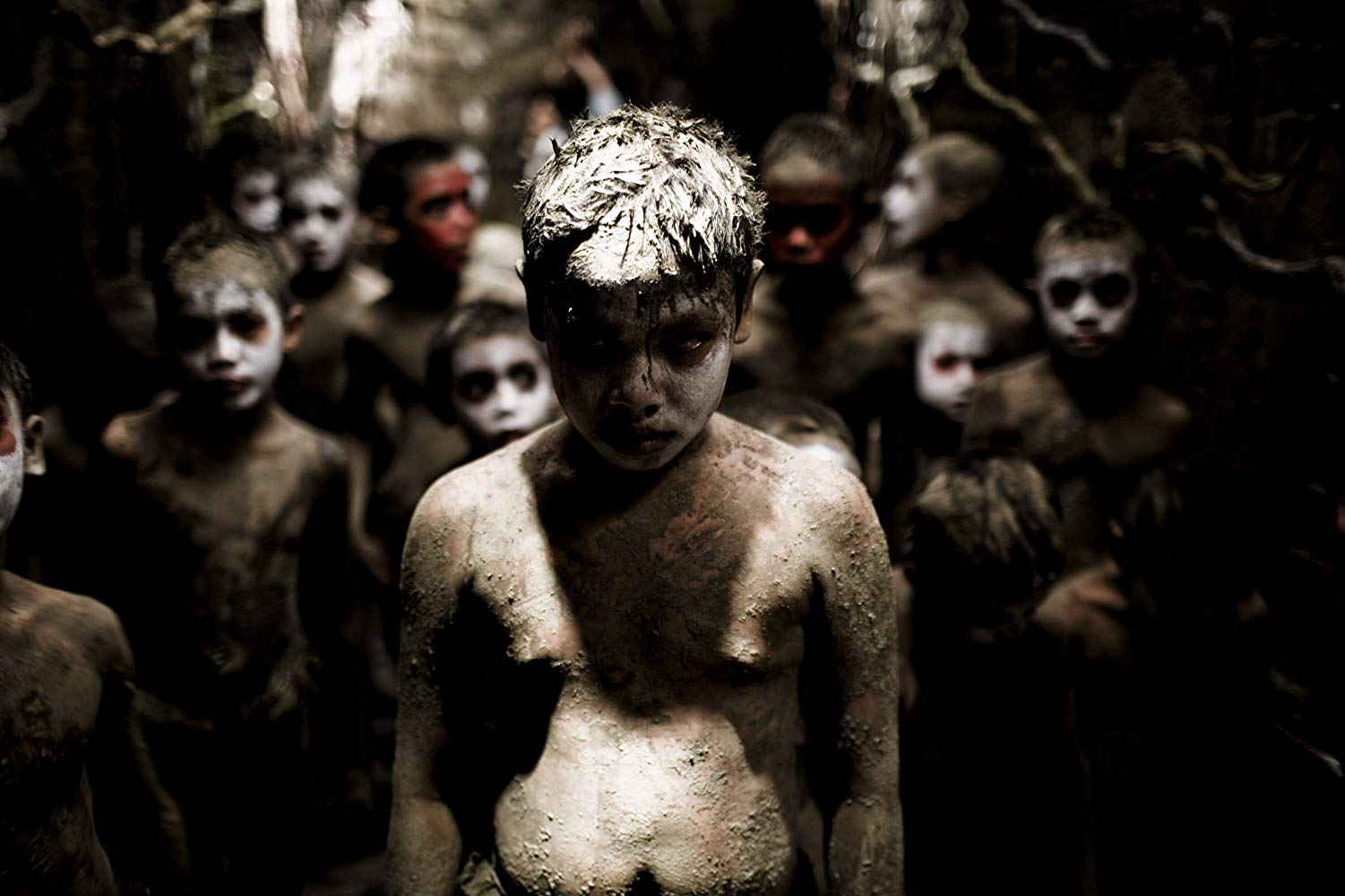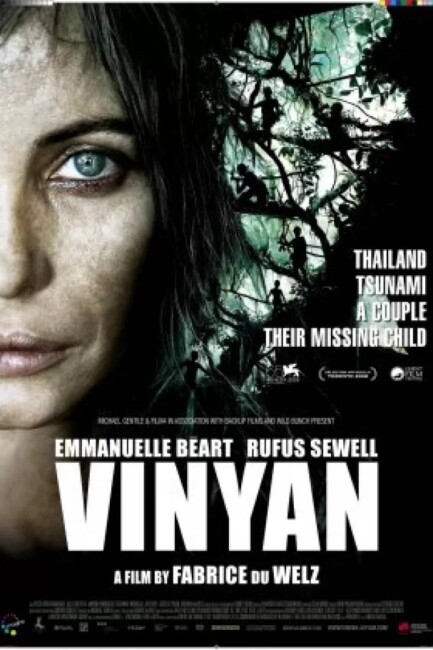UK/France/Belgium. 2008.
Crew
Director/Screenplay – Fabrice Du Welz, Additional Screenplay Material – David Creig, Additional Dialogue – Olly Blackburn, Producer – Michael Gentile, Photography – Benoit Debie, Music – Francois-Eudes Chanfrault, Visual Effects – Bedigital (Supervisor – Stephane Bidault), Production Design – Arin Pinijvararak. Production Company – Wild Bunch/Film 4/The Film/Pilchard Productions/One-Eyed/K2/RTBF/BETV/Backup Films/Motion Investment Group/Coficup 1&2 Funds/Arte Cofinova 2/Canal +/Cinecinema.
Cast
Emmanuelle Beart (Jeanne Bellmer), Rufus Sewell (Paul Bellmer), Petch Osathanugrah (Thaksin Gao), Joey Boy (Boomsong), Julie Dreyfus (Kim), Ampton Pankratok (Sonchaï), Josse De Pauw (Matthias)
Plot
Husband and wife Paul and Jeanne Bellmer are in Thailand, trying to cope with the disappearance of their son Joshua following a tsunami six months earlier. After they view a charity video of a village in Burma, Jeanne is certain she can identify Joshua’s distinctive red football jersey and that he is one of the children in the background. Though he expresses doubts about it being Joshua, Paul agrees to accompany Jeanne on a trip across the border into Burma to find him. They pay a large sum to the untrustworthy Thaksin Gao to guide them into remote areas, although it becomes apparent that Gao is only interested in their money. Jeanne becomes increasingly more mentally unstable as they arrive at an abandoned village inhabited by mysterious feral children.
Vinyan was the second film from Belgian director Fabrice Du Welz who previously made an international splash with the disturbingly weird Backwoods Brutality film The Ordeal (2004). The Ordeal gained a name in international film festivals and clearly allowed Fabrice Du Welz a better budget and the ability to draw name stars for his next film here.
As soon as Vinyan opens, Fabrice Du Welz determines to absorb us in a different world. He immerses us in a depiction of Thailand as a bustling metropolis and underworld – the busy markets, prostitutes, clubs and disreputable bars tinged in garish red and green lighting where dialogue is overrun by loud music, the maze of alleys and back streets that Rufus Sewell and Emmanuelle Beart are drawn through. As Rufus Sewell tries to keep up with Emmanuelle Beart, Du Welz’s camera is constantly on the move and never still, visually leaving us with the feeling of being lost and bewildered in a foreign culture.
In this sense, Vinyan does a superb job of obtaining a sense of ethnic colour – in the scenes where they take the boat to the Burmese border, it is as though Fabrice Du Welz placed Rufus Swell and Emmanuelle Beart on a real boat and filmed their interactions with locals. Equally, their journey is undercut with a sense of anxiety on our part – we bite our lip when someone seems to be asking for thousands of dollars from them at every turn and want to scream some sense into them when they readily hand over their passports to an underworld figure in order to pass through Burmese customs.

The further the journey takes them, the more alien the world they are travelling into appears to us. There is the arrival at Petch Osathanugrah’s island only to see their guide Joey Boy abruptly beaten and left for dead on the beach before they are then welcomed; Rufus Sewell goes to look for Emmanuelle Beart and sees boys throwing stones on the beach but then the camera wanders away from where they are to show that it is a dead and bloodied body they are throwing stones at; Rufus Sewell peeps in through a window to see Petch Osathanugrah presiding over a room where naked women turn in circles like zombies. No explanation is ever offered for these things – it is as though we have entered a world where normal rational explanations for events have to be abandoned.
Fabrice Du Welz creates a haunted atmosphere that becomes more brooding the more remote from civilisation that they get. The location photography in the wilds is stunning and Du Welz is enormously aided by a beautiful and unusual score that avoid all cliche treatments for building suspense. The last third is all the slow accumulation of atmosphere as a result of the score and increasingly alienating sound effects on the soundtrack. There are few other films that capture such a haunted sense of place – Apocalypse Now (1979) was one of these, the obscure New Zealand film The Lost Tribe (1985) was another.
If you want the soundbite summation, maybe you could characterise Vinyan as being something of Clint Eastwood’s Changeling (2008) combined with Return to Pontianak (2001) or Uncle Boonmee Who Can Recall His Past Lives (2010), perhaps even with a few dashes of William Golding’s Lord of the Flies (1954) – see the film versions Lord of the Flies (1963) and Lord of the Flies (1990) – added to the mix.

The downside of Vinyan is that we never get any easy clues as to what is going on, who the children are, whether they are ghost spirits or wild children, even whether Joshua is still alive or his appearances are just in Rufus Sewell and Emmanuelle Beart’s imagination. The film reaches an exceedingly enigmatic ending where nothing about who the children are is ever explained. In this one can see the overriding themes of Fabrice Du Welz’s two films so far – both The Ordeal and Vinyan concern characters who venture into remote places where the behaviour of the locals around them becomes increasingly stranger, more inexplicable and eventually life-threatening. They are films of journeys away from the comforts of Western civilisation and into the wholly alien.
Leads Rufus Sewell and Emmanuelle Beart never get up to much. Rufus Sewell is someone who works best when playing with a darkly handsome, magnetic charisma; here he just plays a milquetoast role as a regular husband trying to keep up with his wife’s madcap scheme. Emmanuelle Beart is one of the most beautiful actresses in the world – her only direction here though is one of increasing mental unbalance as the film progresses.
Fabrice Du Welz subsequently went onto make Alleluia (2014), an updated retelling of the Raymond Fernandez-Martha Beck murder spree; the revenge film A Message from the King (2016); Adoration (2019) about teenage runaways; and Inexorable (2021) about a sinister stranger.
(Nominee for Best Cinematography at this site’s Best of 2008 Awards)
Trailer here


